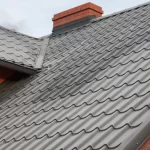
Hurricane Proof roofs are designed to withstand high wind pressure and impact from hurricanes. They are certified to handle uplift pressure of 110 mph, are BRE Wind-Driven Rain tested, and come with full BBA and ETA certification. When it comes to securing your home from hurricanes, it is crucial to take extra care to protect the areas of your roof that are most susceptible to damage.
One of the best ways to prepare your home for a hurricane is by upgrading the materials used on the roof. The underlay of the roof is essential to prevent the shingles from flying off during hurricanes. Roofing contractors can help you determine which materials to use to protect your property. The best option is to hire a roofing contractor with extensive experience in high-wind events.
Another way to protect your home is to check for any holes or cracks in your roof. Small holes in the roof can invite water into your attic. During a hurricane, these holes can also provide an entry point for strong winds, increasing the risk of tearing the roof off the house. Additionally, mold and algae are common threats to your roof. These organisms can cause the roof to crumble, destroying the materials that protect your home from hurricane damage. Clogged gutters may also cause water to accumulate on the roof and damage its structure.
There are also hurricane-proof tile roofs available. These are the most expensive types of hurricane-proof roofs, but they can last for 100 years or more. They can be painted in a variety of colors, and they also make your home cooler. They can be made of various materials, including tile, metal, and composite/synthetic.
Hurricane-proofing your roof is not an easy task. While there are several professional companies that offer hurricane-proofing services, homeowners can also do it on their own. However, homeowners should check the local building codes to determine what type of storm protection is needed for their home. While most homes do not need this level of storm protection, homeowners in high-risk areas should have their roofs reinforced with hurricane straps.
In Seminole County, Florida, seven schools are getting new hurricane-proof roofs, which will protect them from hurricane-force winds. The project is estimated to cost more than $2 million. The new roofs are designed to prevent leaks and keep buildings airtight. They will also feature special vents that use wind to create suction on the roof.
The material used to make a hurricane-proof roof is also critical. There are several types of shingles, and it is important to find the one that is best for your home. Despite the fact that asphalt shingles are the cheapest, they are not as durable as metal roofs and should be replaced only if they have sustained major damage from hurricanes.










